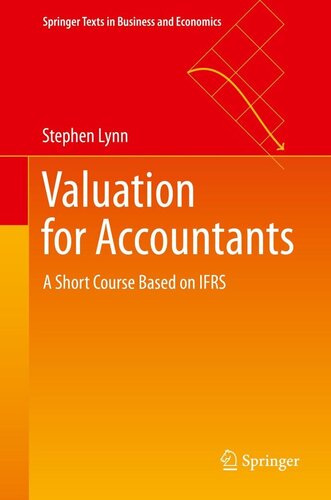

Most ebook files are in PDF format, so you can easily read them using various software such as Foxit Reader or directly on the Google Chrome browser.
Some ebook files are released by publishers in other formats such as .awz, .mobi, .epub, .fb2, etc. You may need to install specific software to read these formats on mobile/PC, such as Calibre.
Please read the tutorial at this link: https://ebookbell.com/faq
We offer FREE conversion to the popular formats you request; however, this may take some time. Therefore, right after payment, please email us, and we will try to provide the service as quickly as possible.
For some exceptional file formats or broken links (if any), please refrain from opening any disputes. Instead, email us first, and we will try to assist within a maximum of 6 hours.
EbookBell Team

0.0
0 reviewsThis book focuses on the valuation needed to apply IFRS (International Financial Reporting Standards), and provides coverage of financial instruments – indeed this is the starting point of the exposition. The book adopts a logical sequence where models of financial instruments are explained first and models of other assets (such as property, an enterprise, or multiple intangibles) are presented as extensions. The book uses mathematical notation in presenting many of the models, but the focus is on application rather than proof. The mathematics is presented at a level that assumes sufficient background in high school algebra and coordinate geometry, prior knowledge of elementary probability, and a knowledge of basic statistics. Readers should also be aware of what linear regression does and should be able to run a regression and interpret the output. Calculus is not assumed. The models discussed almost always require a computer to apply. However, the emphasis is on understanding the models rather than learning computer skills, especially in the case of financial instruments.
This book focuses on the valuation needed to apply IFRS (International Financial Reporting Standards), and provides coverage of financial instruments – indeed this is the starting point of the exposition. The book adopts a logical sequence where models of financial instruments are explained first and models of other assets (such as property, an enterprise, or multiple intangibles) are presented as extensions. The book uses mathematical notation in presenting many of the models, but the focus is on application rather than proof. The mathematics is presented at a level that assumes sufficient background in high school algebra and coordinate geometry, prior knowledge of elementary probability, and a knowledge of basic statistics. Readers should also be aware of what linear regression does and should be able to run a regression and interpret the output. Calculus is not assumed. The models discussed almost always require a computer to apply. However, the emphasis is on understanding the models rather than learning computer skills, especially in the case of financial instruments.
Stephen Lynn is Associate Professor and Deputy Head of the Accounting Department at the National University of Singapore Business School. He has taught a variety of accounting courses including valuation for accountants and accounting theory. His current scholarly interests include valuation, technical issues in financial reporting and issues in teaching accounting.